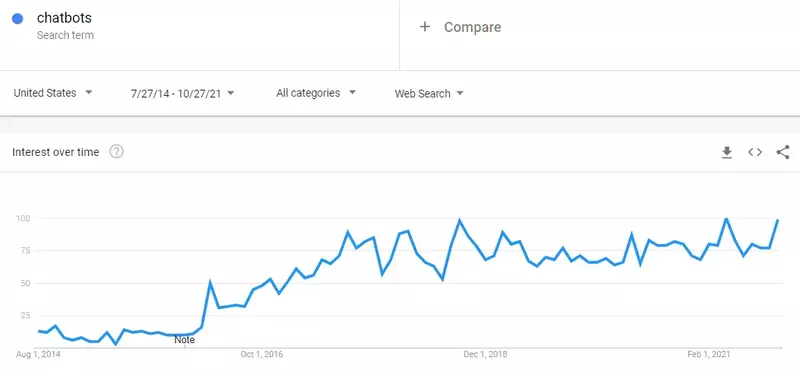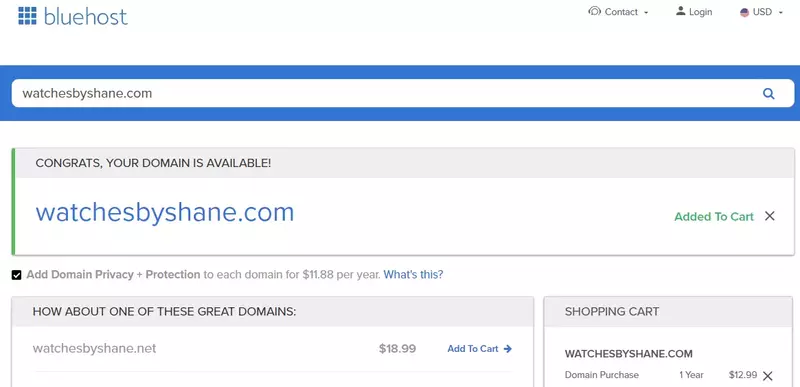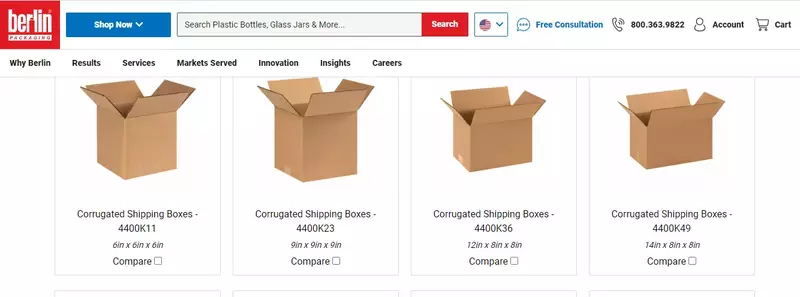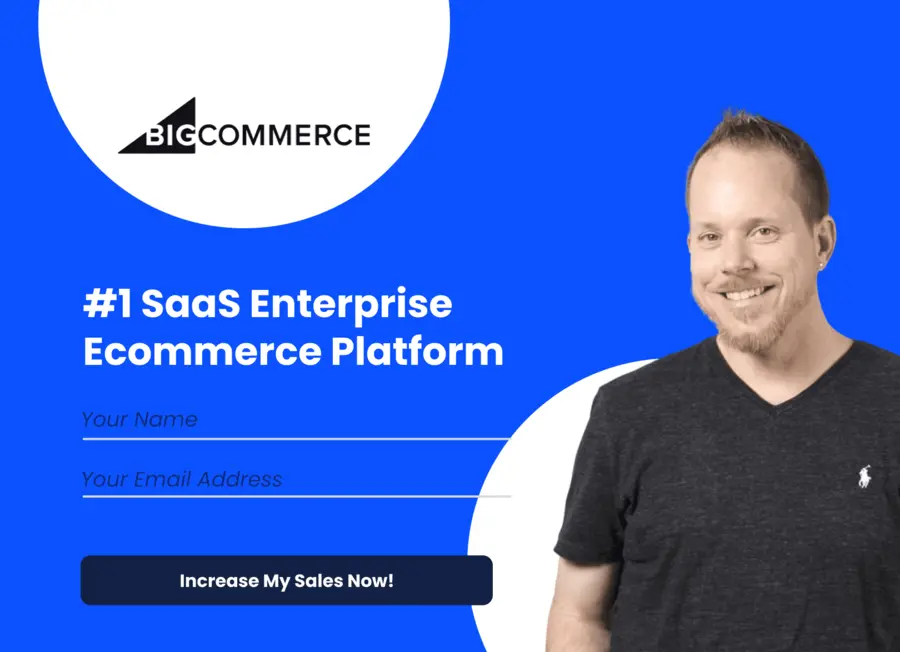B2B ecommerce is the process of selling physical and digital products from business to business via an ecommerce website.
Earlier, B2B businesses used to market and sell using tactics like cold calling, print ads, trade shows, and conferences. But the times have changed.
Today, 73% of millennials are involved in the B2B buying process, which has led to an increase in B2B digital marketing and selling. B2B buyers conduct about 12 online searches before they make a purchase.
To resonate with B2B shoppers, you should start selling online. Along with joining online marketplaces like Amazon and Etsy, you should start your own B2B ecommerce website to attract new business customers.
Wondering where to start from?
Keep reading to learn everything you need to know about the B2B ecommerce business model and how to start your online store.
Table of Contents
What is B2B Ecommerce?
B2B ecommerce involves selling products as a manufacturer to a wholesaler or as a wholesaler to a retailer through an online store or marketplace. You’ll most likely work with wholesalers, large retailers, and resellers.
Some of the common types of businesses include in the B2B ecommerce niche are:
- Manufacturers
- Wholesale businesses
- Suppliers and distributors
- Online marketplaces that connect manufacturers, wholesalers, and resellers
- SaaS (software as a service) companies such as Salesforce
Key Advantages of the B2B Ecommerce Business Model
While taking your B2B business online may seem challenging, it can help you reach the mass market efficiently and boost sales growth.
By starting a B2B ecommerce store, you can:
- Open new opportunities to connect with suppliers and distributors.
- Reduce infrastructure and overhead costs.
- Eliminate intermediaries to increase sales and profit.
- Offer better customer experiences.
- Develop better partner and customer relationships.
- Streamline ordering process, inventory management, and payment collection.
- Gather wider data about return visits, order frequency, retention rate, and much more.
8 Steps to Build Your Ecommerce Store From Scratch
According to a Forrester report, B2B ecommerce will become a $1.3 trillion market in the United States by 2023. It will account for 17% of all B2B sales in the country.
To build a successful B2B ecommerce business, you should follow the step-by-step process to build your ecommerce store.
1. Conduct Market Research
You should conduct thorough market research to identify your niche, target customers, and competitors.
You should start by choosing a niche for your B2B ecommerce business. Make sure that it is large enough to provide you with enough space to scale.
Analyze whether or not there is sufficient market demand for the products you choose to sell. What problems will your product solve? Are there too many competitors selling products of similar quality? What can make your product stand out?
Does the niche have a steady growth trend? You can use Google Trends to check this.
You should pick a niche that has a steady upward growth chart.
It is also important to analyze if you’ve got the expertise, internal resources, and connections to build a B2B business in the niche you want to pick.
2. Define Your Budget
Before starting any business, it is necessary to clearly define your financial needs and plan. You should start by evaluating the cost of starting and growing your B2B ecommerce business.
- Consider expenses like:
- Domain, web hosting, and maintenance costs
- B2B ecommerce development costs
- Business registration, licensing, and maintenance costs
- Marketing budget
3. Decide on Your B2B Ecommerce Business Model
Now that you have evaluated the costs of starting a B2B ecommerce store, it is time to define how you will make money.
You can choose business models such as:
- Manufacturing: You’ll manufacture products and sell them to wholesalers, retailers, distributors, and resellers. You will be responsible for product research and development, sourcing raw materials, production, and distribution.This business model requires high investment and is associated with high risks.
- Wholesaling: In this business model, you will not manufacture products. You’ll purchase and sell goods in bulk and will need to invest in warehousing, storage, and shipping.
- Dropshipping: You will act as an intermediary to connect wholesalers to retailers, who will ship the products themselves. It is a low-cost business model and is easier to start.
4. Buy a Domain and Web Hosting
To allow your B2B buyers to shop online, you will need to buy a domain name and web hosting solution for your ecommerce store.
Pick a name that is relevant to the products you want to sell, easily recognizable, and available as a domain name and social media handles.
You can perform a search on GoDaddy, Bluehost, or other domain registrars to check if a particular domain name is available to use.
Next, you should choose a web hosting provider that:
- Offers maximum uptime. If your website is down, you can lose potential customers, and thereby, lose a lot of money as a B2B ecommerce business.
- Provides good page speed. You should consider how much traffic you’ll most likely get on your B2B ecommerce site and pick a hosting plan that provides sufficient bandwidth.
- Is scalable. Most hosting solutions allow you to upgrade your plan as your business grows and the website traffic increases.
- Is secure. The web hosting solution you choose should be very secure to build customer trust and process payments safely.
Some of the popular web hosting solutions include Bluehost, HostGator, and Hostinger.
5. Pick a B2B Ecommerce Platform
To pick the right B2B ecommerce platform for your business, you should consider factors like:
- Your budget for website design and development
- The ecommerce features you need such as dynamic pricing, checkout options, shipping solutions, etc.
- The customer support options you’re comfortable with
- Uptime statistics
- Reviews and case studies from B2B businesses that are already using the platform
- Other business requirements
Let’s take a look at some of the best B2B ecommerce platforms with advanced features.
BigCommerce
BigCommerce is one of the best ecommerce platforms to build your B2B ecommerce store without technical expertise.
It allows you to sell your products and services on multiple channels, which makes it easier to reach the mass market with less investment. You can list, advertise, and sell your products on Google, Facebook, Instagram, Pinterest, Amazon, eBay, Walmart, and more.
With BigCommerce, you’ll be able to:
- Sell more with B2B-optimized website themes for large product catalogs.
- Automate customer and pricing segmentation down to the SKU (stock-keeping unit) level.
- Deliver a better B2B ecommerce experience with built-in tools for immediate quote generation, custom discounts, shared shopping lists, and re-ordering.
- Integrate with all major ERP (enterprise resource planning), OMS (order management system), and CRM (customer relationship management) systems.
- Reduce costs by defining custom shipping rates for your B2B customers through their ShipperHQ integration.
And to top it all off, this ecommerce platform doesn’t charge any transaction fees for major payment gateways, thereby, helping you reduce sales costs.
Berlin Packaging reported a 27% increase in their conversion rate YoY after they switched to BigCommerce.
The B2B brand particularly likes BigCommerce for its open API and the use of custom fields that add flexibility to the site.
So, what are you waiting for? Try BigCommerce for yourself now.
You can also check out my detailed BigCommerce review to learn more about the key features, pros and cons, and use cases of this popular ecommerce platform.
WooCommerce
WooCommerce is one of the most popular ecommerce platforms that allows you to build an ecommerce website from scratch or turn your WordPress site into an online store.
Whether you want to boost your B2B ecommerce conversion rate or improve your customer relationships, this platform allows you to do it all. All you need to do is to leverage the right WooCommerce plugins and add-ons.
Here are some of the free and plugins that can help you add ecommerce functionality to your B2B website:
- Advanced Dynamic Pricing for WooCommerce: It lets you quickly set discounts and pricing rules for your B2B ecommerce store.
- WooCommerce Advanced Shipping: It helps you set detailed shipping rules based on factors like product weight, dimensions, item quantity, delivery location, order value, and more.
- WooCommerce PDF Invoices & Packing Slips: It helps you automatically add a PDF invoice to the order confirmation emails sent to your customers.
- Checkout Field Editor for WooCommerce: It lets you add 7 different types of custom checkout fields to boost order completions.
- WooCommerce Currency Switcher (WOOCS): It allows your B2B ecommerce site visitors to view product pricing in their selected currency. It is a useful plugin for businesses operating in multiple countries.
Also, check out my complete comparison post for WooCommerce vs. BigCommerce to understand the major differences between these two ecommerce platforms.
6. Hire a Development Team
It is easier to build a B2B ecommerce website using dedicated ecommerce platforms and drag-and-drop website builders. But there are a few things that you should leave to the professionals.
Hiring a senior developer or a web development company can also help you save time on the designing, development, and maintenance of your B2B ecommerce website.
You can use that time to focus on optimizing your ecommerce model for faster growth and success.
7. Build Your B2B Ecommerce Website
When building your B2B ecommerce website, you should focus on the needs of B2B buyers. The features you choose to add to your ecommerce store will depend on what you have to offer and your target audience.
Here are some of the common features that most B2B ecommerce stores have:
- User registration
- Company and customer profile
- Easy navigation menu and sidebars
- Product catalog with fixed prices and custom discounts
- Advanced search functionality
- Product and company descriptions
- Personalization and recommendations
- Product comparison features
- Dynamic pricing options
- Payment gateways
- Rating and reviews
- Shipping rules and capabilities
- Integrations with other business and marketing solutions
- Analytics
- A robust admin panel
- Sales reps quoting
- User-generated content (UGC) addition option
- Checkout process optimization features
8. Put a Marketing Strategy in Place
Launching your ecommerce store isn’t enough. You should carefully use your B2B ecommerce marketing budget to reach the mass market and engage your target audience.
Let’s take a look at a few powerful B2B ecommerce growth strategies that can help you increase your online sales.
- Search engine optimization (SEO): Optimize your B2B ecommerce store for relevant keywords, page speed, mobile responsiveness, user-friendliness, and other search ranking factors.
- Email marketing: Build an email list and send personalized product recommendations and volume-based discount offers to the businesses that frequently make purchases online.
- Chatbot marketing: Deploy a chatbot or live chat solution to allow a bot or a sales rep to engage your B2B ecommerce website visitors and drive more sales.
- Social media marketing: Reach your target audience through channels they are most active on. LinkedIn is a powerful marketing channel for B2B businesses. You can also partner with industry experts to increase brand awareness.
You should use the right B2B marketing tools to automate repetitive tasks and optimize your campaigns by gathering data.
B2B Ecommerce Best Practices
To make your B2B ecommerce business successful, you should optimize your B2B ecommerce site pages for conversions.
- Use high-quality product images and videos.
- Create custom price catalogs for different customer groups.
- Set minimum and maximum order quantities for each product listed on your online store.
- Offer volume-based discounts to increase average order value.
- Allow multi-level purchase approvals with user authority levels.
- Give flexible payment options to make shopping easier.
- Deliver B2C-like shopping experiences to your B2B customers.
- Leverage automation to improve efficiency and reduce customer support and marketing costs.
FAQs
1. How do I start a B2B ecommerce business?
To start a B2B ecommerce business, you should:
- Identify your niche.
- Decide on your B2B ecommerce business model.
- Buy a domain and web hosting.
- Pick a B2B ecommerce platform.
- Hire a development team.
- Build your B2B ecommerce website.
- Put a marketing strategy in place.
- Start selling online.
2. Does ecommerce work for B2B?
Yes, ecommerce works quite well for B2B businesses as B2B buyers also prefer shopping online these days.
3. What is B2B ecommerce (with example)?
B2B ecommerce refers to selling goods online to other businesses. Some of the companies that are using B2B ecommerce include:
- HD Supply
- ResMed
- Berlin Packaging
- Nike
- Microsoft
- Salesforce
4. What is the difference between B2B ecommerce and B2C ecommerce?
B2B ecommerce involves selling goods to businesses while B2C ecommerce focuses on selling goods to individual customers. This is the main difference between these two types of ecommerce businesses.
5. What are some essential features of a B2B ecommerce store?
A B2B ecommerce store should have the following feature:
- Ability to purchase, track, and reorder products
- Custom price catalogs for individual customers and customer groups
- A minimum and maximum order quantity cap per product
- Fixed price lists and volume-based discounts
- Multi-level purchase approvals with user authority levels
Ready to Start Your B2B Ecommerce Store?
Ecommerce is changing the way of doing business. Whether you run a B2C or B2B business, it has become equally important to build a solid online presence and start selling online.
You should follow the steps mentioned above to build a B2B ecommerce store to allow your wholesale customers to shop online. Include functionality like custom sales reps quoting, volume-based discounts, company base rate, etc. to encourage online shopping.
Do you have questions about starting and growing a B2B ecommerce business? Feel free to contact us for one-on-one consultation services.






Related Articles
11 Best Ecommerce Platforms to Set Up an Online Store
Top B2B Ecommerce Platforms for 2024
How to Build an Ecommerce Website in 9 Easy Steps
11 Best Ecommerce Platforms for Small Businesses in 2024
The World’s Top Ecommerce Companies (2024 List)
25 Best Ecommerce Tools to Grow Your Business in 2024